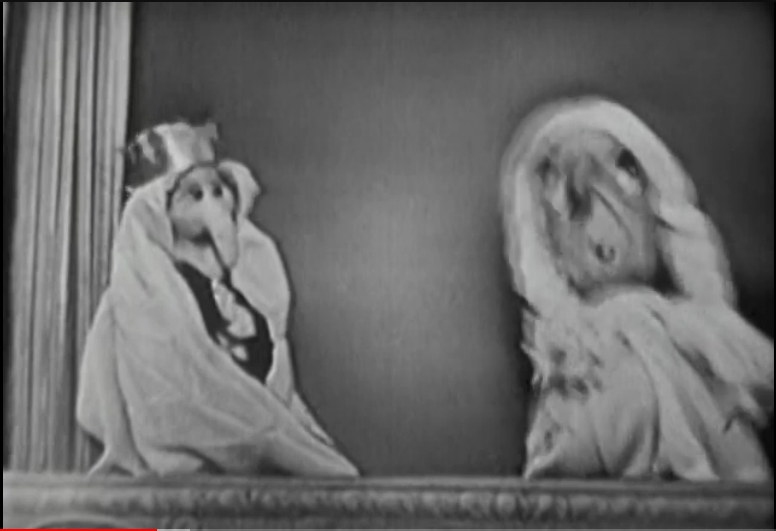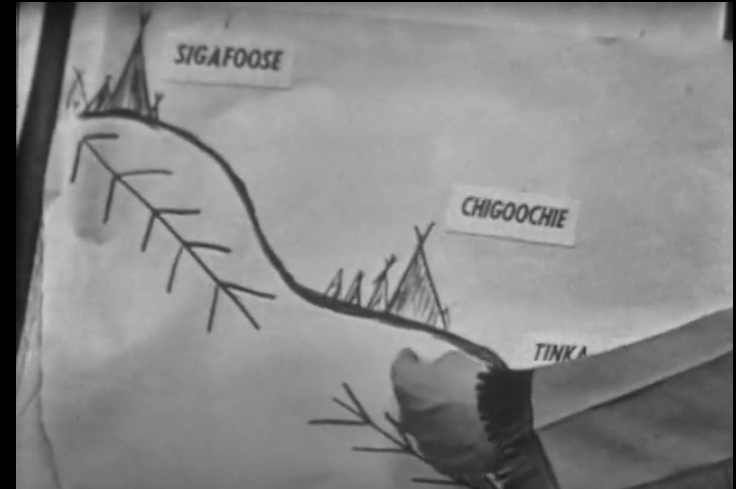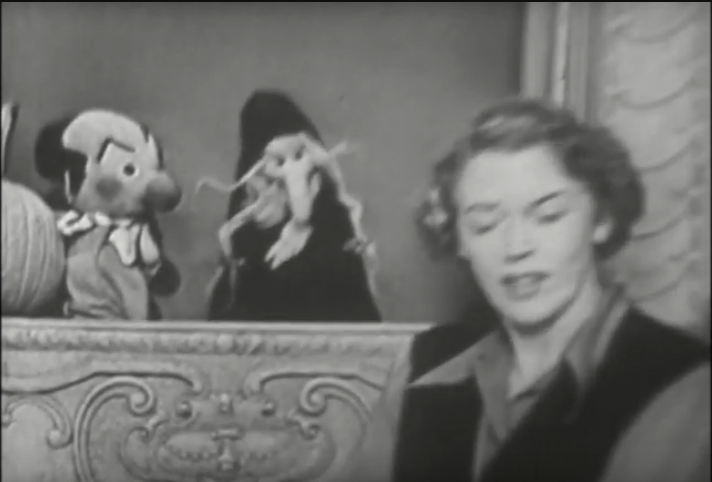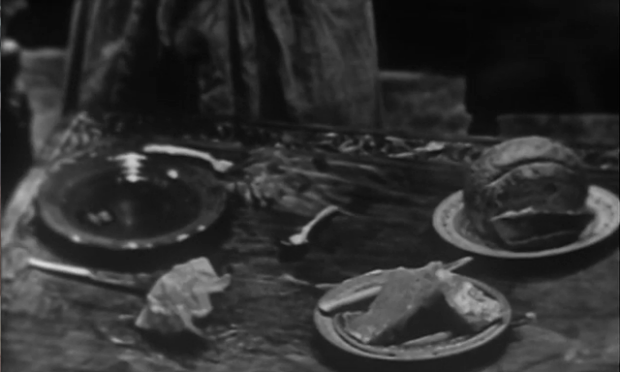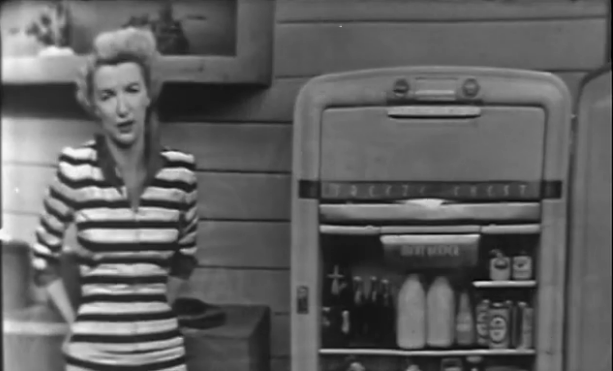What I watched: Two matches from the NWA Wrestling from Chicago promotion that took place on Friday November 3, 1950. The matches were Mighty Atlas vs. Great Moto and Gorgeous George vs. Hans Schnabel, with commentary by Russ Davis. I’m not certain if these matches would have aired live, but if not they were likely televised during ABC’s Wednesday night wrestling show.
Starring: The one new wrestler in today’s match is The Mighty Atlas, an incredibly jacked man, especially by 1950s standards. He unsurprisingly was a former strongman, known for lifting an anvil with his teeth. Born Morris Shapiro, a name which is mentioned in this match, he was trained as a strongman by his father, who had emigrated from Russia, before moving to a more modern circus in pro wrestling. Despite hailing from Brooklyn, he had his most success as a wrestler in the Mid-West and South.
What happened: The first match sees Great Moto taking on The Mighty Atlas, who is also identified as Maury Shapiro. Moto is already in the ring as we start, fanning himself and wearing Japanese sandals and a kimono, while Atlas comes wearing a bursting buttoned-up shirt. Commentator Russ Davis notes that the com

mission has forced him to come to the ring without his manager Fuji. Moto does a ritual to ward off the spirits, while the crowd laughs.
Finally, the two men lock up, and Atlas immediately gets Moto into a bearhug, causing him to bail to the ropes. Moto tries to beg off before hesitantly engaging again. Atlas lands a hard forearm which causes Moto to flee from the ring. Moto pulls his opponent’s hair, getting even more boos. Atlas lifts him up into a vertical suplex position and then dumps him face-first onto the mat, followed by some more rough throws and a football tackle.
Moto makes a comeback with some “judo licks”, or open-hand chops. Atlas takes him over with a hip toss, leading to yet another spot with Moto begging for mercy. Russ tells us that we should “trust him about as much as a bear with a sore paw”, which is a nice little folksy idiom. Moto gets in some chokes up against the ropes in the guise of submission holds. Atlas fights back with a hammerlock as the pace of the match slows to a crawl.
The boys finally get into some slapping, with Moko raking the eyes just as it’s announced there are only three minutes left in the match. Atlas gives him a body slam. The two lock knuckles for a test of strength, which Moto loses, and falls into what would today be called an armbar. The bell rings for the twenty-minute time limit, meaning that the match ends in a “no decision.”
In our main event, Gorgeous George makes his entrance, complete with his manservant and an ostrich-feather fan. Commentator Russ Davis (?) comments on the ochre shade of the manservant’s jacket, and laments that we don’t yet have colour TV. Hans Schnabel, a no-nonsense Midwestern man, is not having any of this. George refuses to have the referee search him, looking indignant.

The bell rings, and George scampers around the squared circle before getting a single-leg takedown. Davis notes that in Illinois there’s a 4-count to release an illegal hold, as opposed to the 5-count modern wrestling fans will be familiar with. (Well, I added that last part.) Hans is able to get some success with a headscissors, but George largely remains in control, including pulling on Hans’ hair. George puts his hands behind his back and appears defenseless, then goes for a cheapshot. Oh George, you scamp!
George continues to beg off, holding his back. This is where I’d expect a nice hard cathartic forearm, but instead Hans just kind of clinches up with him and does a few short punches to the stomach. George applies a reverse chinlock that has both men on the mat. Hans finally unleashes with some punches, only for George to catch him with two consecutive “flying mares.”
At the start of the second fall George plays around some more before pulling Hans into a cradle close to the ropes, allowing Schnabel to grab the bottom strand. George comes up with a leglock, and Hans grabs at his hair, much to George’s horror. Hans gets a pair of vertical suplexes (described by Davis as “a backflip from way back what” and by the announcer as a “blockbuster”) to win the second fall and level the match.
The third fall starts with Hans pressing George against the ropes and pummeling his midsection before hitting a bodyslam. Schnabel slams George back-first into the corner, in a very modern move, and George flops out of the ring. Hans continues attacking George as he tries to get back in the ring, and shoves the referee aside, leading to the customary DQ. George comes back in with a folding chair and treis to retaliate, before the official gets in between them. Gorgeous George is declared the victor after the disqualification.
What I thought: This is another pair of bouts from Chicago that showcase the emergence of TV wrestling and what things in the squared circle looked like in the middle of the century. Unfortunately, this also includes wrestling’s long history of crude racism. We’ve seen the Great Moto character before, but this time he really hits every Japanese trope, from the throwing salt to the displays of cowardice. Even Russ Davis joins in with some cringe-worthy broken English jokes.
Of course, these tropes probably had an especial appeal to the 1950 audience, for whom the Japanese were very recent war enemies, with all the propaganda and dehumanization that comes with it. The portrayal of the enemy as being simultaneously overly strong and cartoonishly weak, fearsome but cowardly, fits in with typical wartime stereotyping. But even as the war faded into memory, and Japanese wrestling gained a strong fandom in America, this type of Japanese character would persist well into the 1990s. Even today, WWE often gives its Asian wrestlers stereotypical roles – just ask ninja Akira Tozawa or magical schoolgirl Sarray.

In terms of in-ring action the Moto/Atlas bout is also a fairly poor one, hurt by some stiff in-ring movement and a lack of a finish. The Gorgeous George and Hans Schnabel match is better, although not the best we’ve seen from George. We get a more conventional face/heel dynamic than in some of our past bouts, with the cowardly George taking advantage of the local hero Hans.
More and more in these 1950s matches I’m noticing that there’s a lot of relatively static grappling, what would be called “rest holds”, interrupted by brief bursts of fast-paced action between each fall. The slow/fast alternation would basically stay in wrestling, although the fast portions would grow longer and and the slow periods shorter until often in modern matches there are only a few minutes of nominal grappling at the start. We also get an early example of one of wrestling’s favourite tropes when Gorgeous George tries to attack his enemy with a folding chair. So, while we’re still probably in the “historical interest” era of wrestling, there’s a lot to chew on.
Coming up next: We look at a new sitcom in Trouble with Father.


